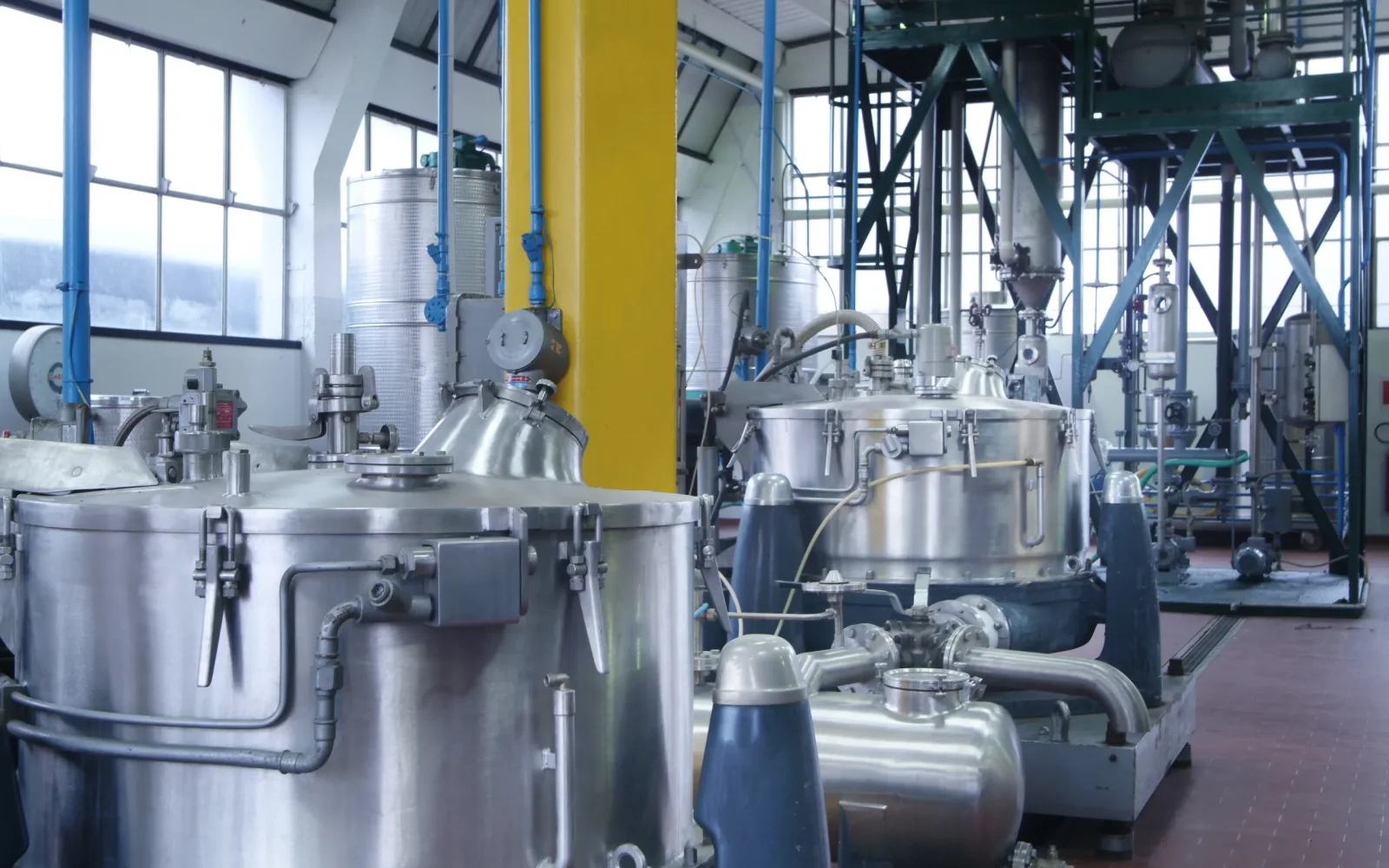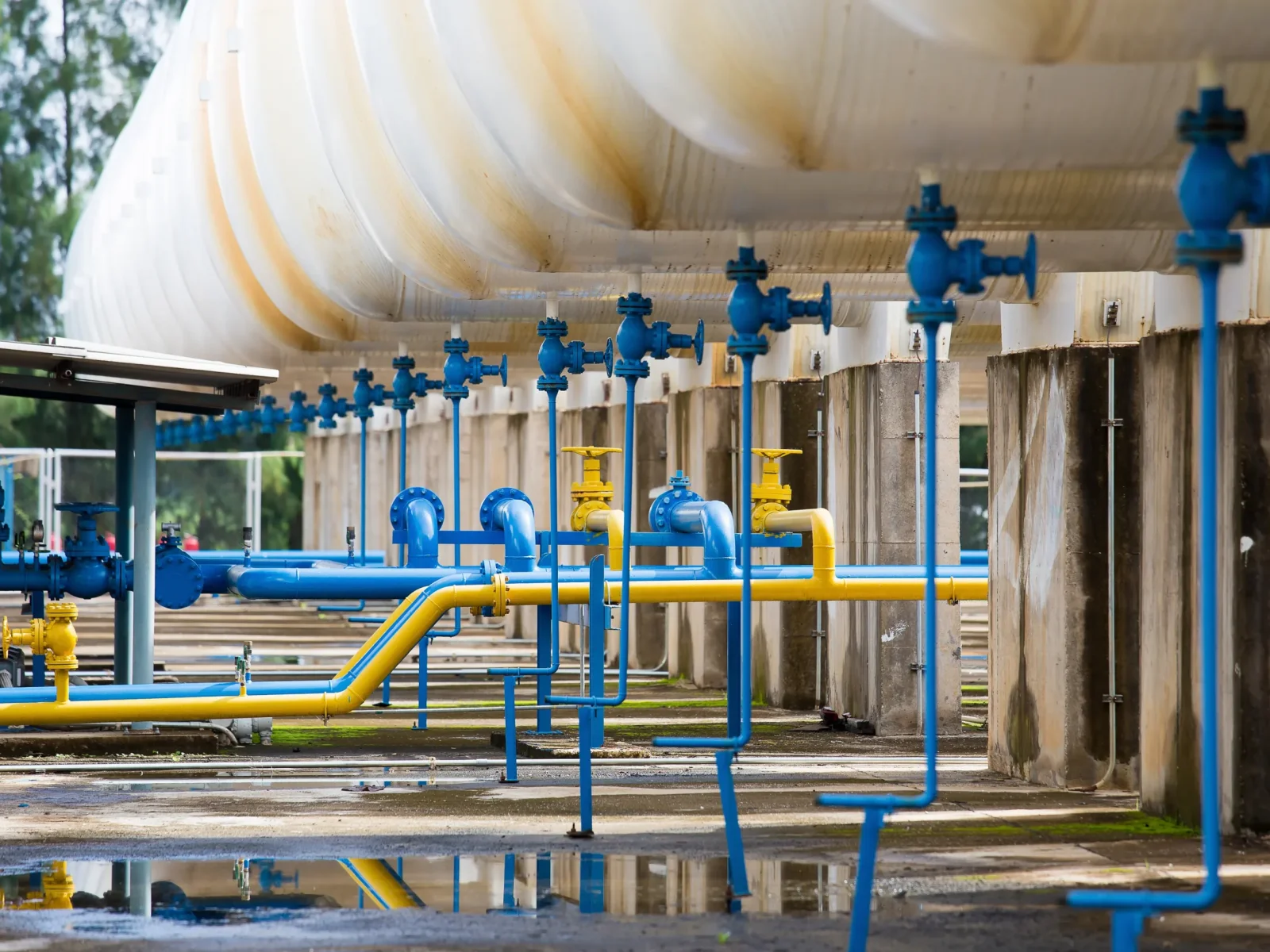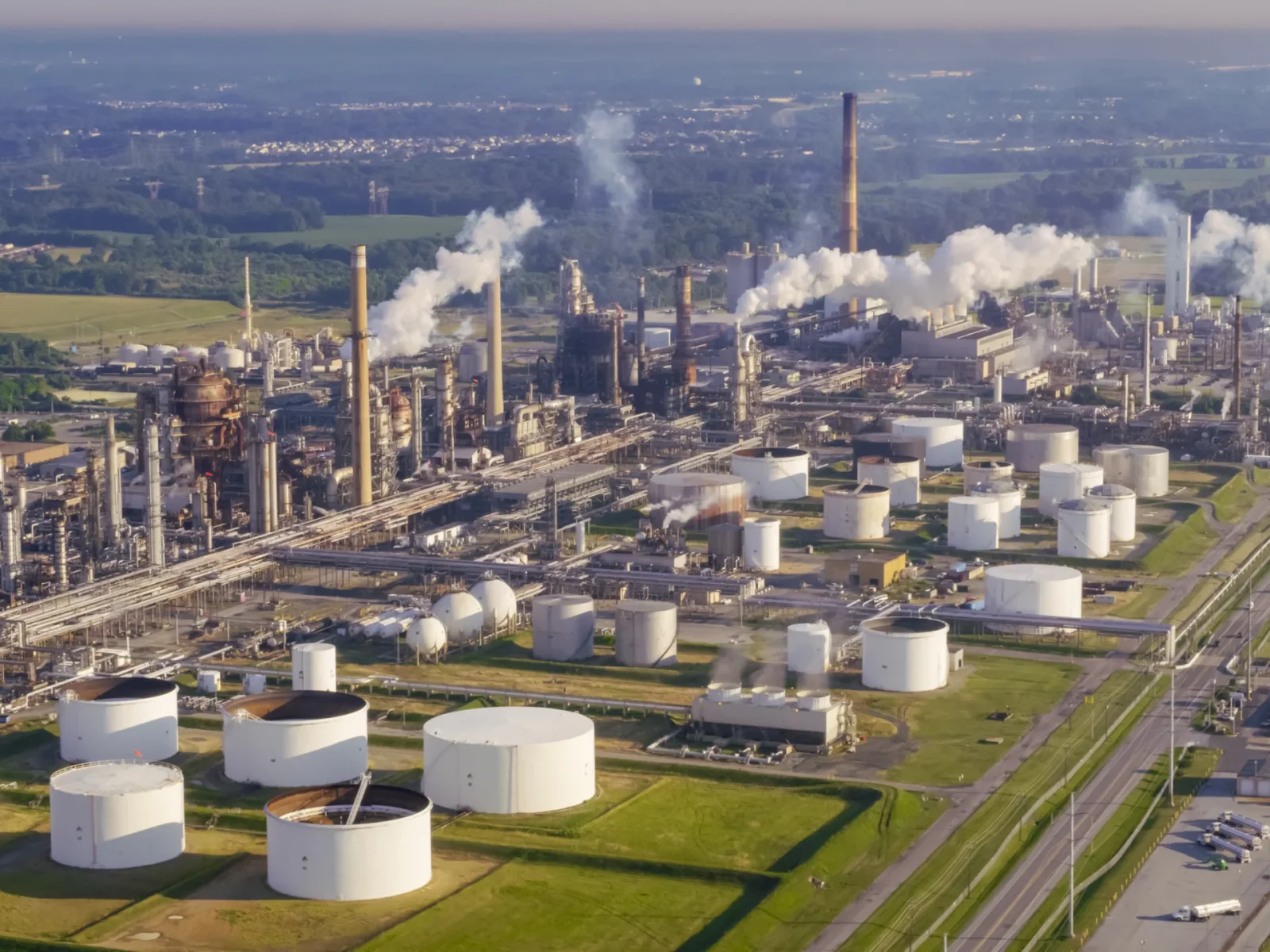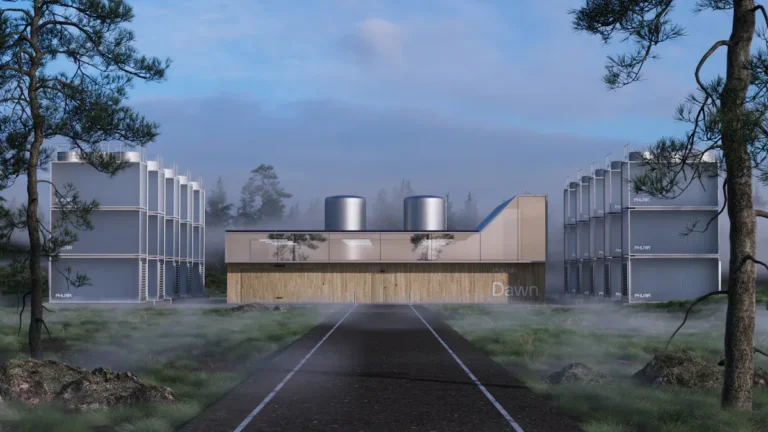Aktivkohle zur Quecksilberentfernung
.webp)
Aktivkohle zur Entfernung von Quecksilber kaufen
Herausforderungen für die Industrie
Risiko einer Sekundärverschmutzung
- Gesättigte Aktivkohle ist ein gefährlicher Abfallstoff (mit einem Quecksilbergehalt von möglicherweise über 1%) und kann bei unsachgemäßer Handhabung zu einer sekundären Freisetzung von Quecksilber führen. Während des Regenerierungsprozesses können quecksilberhaltige Abgase entstehen.
Risiko einer Leistungsminderung
- Die Bestandteile wie SO₂ und Feuchtigkeit im Rauchgas konkurrieren mit den Oberflächenstellen der Aktivkohle um die Adsorption, wodurch die Quecksilberentfernungseffizienz verringert wird. Die Flugasche verstopft die Poren der Aktivkohle, was zu einer Verringerung der spezifischen Oberfläche um mehr als 50% führt.
Sicherheitsrisiko
- Quecksilberdampf neigt dazu, bei der Temperatur der Aktivkohle-Regeneration (>300 °C) zu verdampfen, was eine Gefahr für die Gesundheit der Bediener darstellt. Die Halogene (wie Br) in der modifizierten Aktivkohle können giftige Dioxin-Nebenprodukte erzeugen.
Technisches Risiko
- Rauchgas mit hohem Schwefelgehalt (SO₂ > 1000 ppm) führt zu einer schnellen Deaktivierung von schwefelmodifizierter Aktivkohle, und die Adsorptionskinetik von Hg⁰ verlangsamt sich bei niedrigen Temperaturen (< 120 °C) erheblich.
verwandte Arten von Aktivkohle
-r8fslg51nt6wgjtvh6yldxb1gtkgm3lpe0oq1akgog.webp)
- Jodwert: 600-1200
- Maschenweite: 1×4/4×8/8×16/8×30/12×40/20×40/20×50/30×60/40×70 (weitere Größen auf Anfrage)
- Scheinbare Dichte: 400-700
-r8fsli0q1h9h3rr567ruiwtynlb71ht629zozuhoc0.webp)
- Jodwert: 500-1300
- Maschenweite:0,9-1mm/1,5-2mm/3-4mm/6mm/8mm(Weitere Größen auf Anfrage)
- Scheinbare Dichte: 450-600
-r8fslbfupn0gui0p8mxgjghqhw7mjm31pdfamwrfjk.webp)
- Jodwert: 500-1300
- Maschenweite: 150/200/300/350 (weitere Maschenweiten auf Anfrage)
- Scheinbare Dichte: 450 - 550
-r8fsle9da54btbwls65c8xs4a1tq6pe8prdr2qn90w.webp)
- Jodwert: 400-800
- Maschenweite: 100×100×100mm/100×100×50mm (kundenspezifische Zelldichte auf Anfrage)
- Scheinbare Dichte: 350-450
- Bohrungsdurchmesser:1,5-8mm

- Jodwert: 700-1200 mg/g
- Oberfläche: 700-1200 m²/g
- Scheinbare Dichte: 320-550 kg/m³

- Jodwert: 700-1200 mg/g
- Oberfläche: 700-1200 m²/g
- Scheinbare Dichte: 320-550 kg/m³

- Jodwert: 700-1200 mg/g
- Oberfläche: 700-1200 m²/g
- Scheinbare Dichte: 300-650 kg/m³

- Jodwert: 700-1200 mg/g
- Oberfläche: 700-1200 m²/g
- Scheinbare Dichte: 320-550 kg/m³

- Aktivierungsverfahren: Dampf-/Gasaktivierung bei hohen Temperaturen
- Porenstruktur: Mikroporös-dominiert, gleichmäßige Porenverteilung
- Umweltfreundliches Profil: Chemikalienfrei, niedriger Aschegehalt
- Primäre Anwendungen: Gasphasenadsorption, Trinkwasseraufbereitung

- Aktivierungsverfahren: Chemische Aktivierung (z. B. H₃PO₄/ZnCl₂) bei moderaten Temperaturen
- Porenstruktur: Mesoporös-reich, größere Oberfläche
- Prozess-Effizienz: Kürzere Aktivierungszeit, 30-50% höhere Ausbeute
- Nachbehandlung: Saures Waschen erforderlich, um Rückstände zu entfernen

- Funktionalisierung: Beladen mit Wirkstoffen (z. B. I₂/Ag/KOH)
- Gezielte Adsorption: Verbesserte Abscheidung bestimmter Schadstoffe (z. B. Hg⁰/H₂S/saure Gase)
- Individuelle Anpassung: Chemisch optimiert für Zielkontaminanten
- Hauptanwendungen: Industrielle Gasbehandlung, CBRN-Schutz
Warum unsere Aktivkohle verwenden?

Präzise maßgeschneiderte Lösung zur Quecksilberentfernung:
1. Für Kohlekraftwerke: Modifizierter Kohlenstoff mit hoher Schwefeltoleranz (behält die Effizienz von 90% auch bei einer SO₂-Konzentration von über 2000 ppm bei).
2. Für die Abfallverbrennung: Mit Brom und Schwefel doppelt modifizierter Kohlenstoff, der gleichzeitig Hg⁰ und Dioxine behandelt.
3. Für die Schmelze von Nichteisenmetallen: Mit Ag-Ce beladener Kohlenstoff, geeignet für extrem hohe Quecksilberkonzentrationen von 10 bis 50 mg/m³.

Umweltkonformität und Ressourcenrecycling bringen doppelten Nutzen:
1. Es wird sichergestellt, dass die Emissionen den strengsten Normen entsprechen.
2. Die zugehörige Kondensatreinigungsvorrichtung kann 99,91 TP3T hochreines Quecksilber zurückgewinnen.

Revolutionäre Möglichkeiten zur Kosteneinsparung:
1. Die Gesamtkosten für die Quecksilberbehandlung wurden um 60% reduziert.
2. Durch den kombinierten Prozess aus Mikrowellen- und Säurewäsche kann Aktivkohle 8 bis 10 Mal wiederverwendet werden, wodurch der jährliche Kohlenstoffverbrauch um 70% reduziert wird.
Verfahren und Technologie
1. Physikalische Adsorptionsmethode
Überblick über die Lösung
Die physikalische Adsorption ist die grundlegende Form der Quecksilberentfernung durch Aktivkohle. Dabei wird Quecksilber (Hg⁰) ausschließlich durch die Porenstruktur und die physikalischen Oberflächeneigenschaften der Aktivkohle gebunden, ohne dass eine chemische Modifikation erforderlich ist.

Die wichtigsten Vorteile
- Umweltfreundlich: Keine Einführung von Substanzen wie Schwefel und Halogenen, die zu Sekundärverschmutzung führen können. Keine Gefahr von Nebenprodukten. Vermeidung des Problems der Dioxinbildung durch bromierten Kohlenstoff.
- Einfache Bedienung: Keine Aktivierungsvorbehandlung erforderlich. Das Gerät kann direkt nach dem Auspacken in Betrieb genommen werden. Das System ist einfach aufgebaut. Das Sprühsystem benötigt lediglich einen Vorratsbehälter und einen Ventilator. Das Festbett erfordert keine zusätzliche Oxidationsausrüstung.
- Zuverlässige Grundleistung: Es kann einen einzelnen Adsorptionsprozess innerhalb von 0,1 Sekunden abschließen und gleichzeitig einige organische Schadstoffe entfernen.
- Technische Flexibilität: Es kann als Vorbehandlungsverfahren eingesetzt werden. Zunächst wird physikalische Adsorption zur Reduzierung der Belastung eingesetzt, anschließend wird chemische Adsorption zur Tiefenreinigung angewendet.
2. Chemisch modifizierte Aktivkohle-Methode
Überblick über die Lösung
Die chemische Modifizierung von Aktivkohle ist ein technisches Verfahren, das die Effizienz der Quecksilberentfernung verbessert, indem die Oberfläche der Aktivkohle chemisch behandelt wird, um ihr die Fähigkeit zu verleihen, Quecksilber spezifisch zu adsorbieren oder katalytisch umzuwandeln.

Die wichtigsten Vorteile
- Ultrahohe Quecksilberentfernungskapazität: Die Quecksilberadsorptionskapazität der modifizierten Aktivkohle kann 5-50 mg Hg/g erreichen (während gewöhnliche Kohle nur 0,1-0,5 mg/g aufweist), und die Entfernung von Hg⁰ liegt bei über 90%.
- Multifunktionale kollaborative Reinigung: Schwefelmodifizierte Aktivkohle kann über 90% As/Se adsorbieren, während halogenmodifizierte Aktivkohle Dioxine abbauen kann (mit einer Abbaurate von > 80%).
- Wirtschaftliche und umweltschützende Eigenschaften: Der metallhaltige Kohlenstoff kann 5-8 Mal recycelt werden. Die durch thermische Regeneration zurückgewonnene Quecksilberreinheit beträgt > 99,91 TP3T. Die Quecksilberanreicherungskapazität des modifizierten Kohlenstoffs reduziert die Menge an Abfallkohlenstoff um 801 TP3T.
- Starke technologische Skalierbarkeit: Auswahl des geeigneten Modifikators auf Grundlage der Eigenschaften des Rauchgases und dynamische Anpassung der Einspritzmenge durch Online-Quecksilberüberwachung. Das MOFs/Aktivkohle-Verbundmaterial kann die Adsorptionskapazität auf über 100 mg/g erhöhen.
3. Verfahren zur Verarbeitung von Verbundwerkstoffen
Überblick über die Lösung
Das Verbundverfahren kombiniert Aktivkohle mit anderen Reinigungstechnologien, um ein synergistisches System zur Quecksilberentfernung zu schaffen und so die Einschränkungen einer einzelnen Technologie zu überwinden.

Die wichtigsten Vorteile
- Verdoppelte Effizienz: Durch das SCR-Verfahren in Kombination mit Aktivkohle konnte die Hg⁰-Entfernungsrate von 40% (bei alleiniger Anwendung von SCR) auf 95% gesteigert werden. Das Verfahren mit O₃-Oxidation und Aktivkohle erreicht eine Entfernungsrate von über 99% für schwer zu behandelndes Hg⁰.
- Kostenoptimierung: Das kombinierte elektrostatische Staubabscheidesystem kann den Verbrauch von Aktivkohle um 50% reduzieren, und durch die Nutzung der vorhandenen Entstickungs-/Entschwefelungsanlagen können Investitionen in Höhe von mehr als 30% eingespart werden.
- Verbesserte Störungsunterdrückung: Durch eine Vorentschwefelung (z. B. Nassentschwefelung) kann der Einfluss von SO₂ auf Aktivkohle beseitigt werden, und durch eine Vorentstaubung (z. B. mit Schlauchfiltern) kann verhindert werden, dass Flugasche die Poren der Kohle verstopft.

